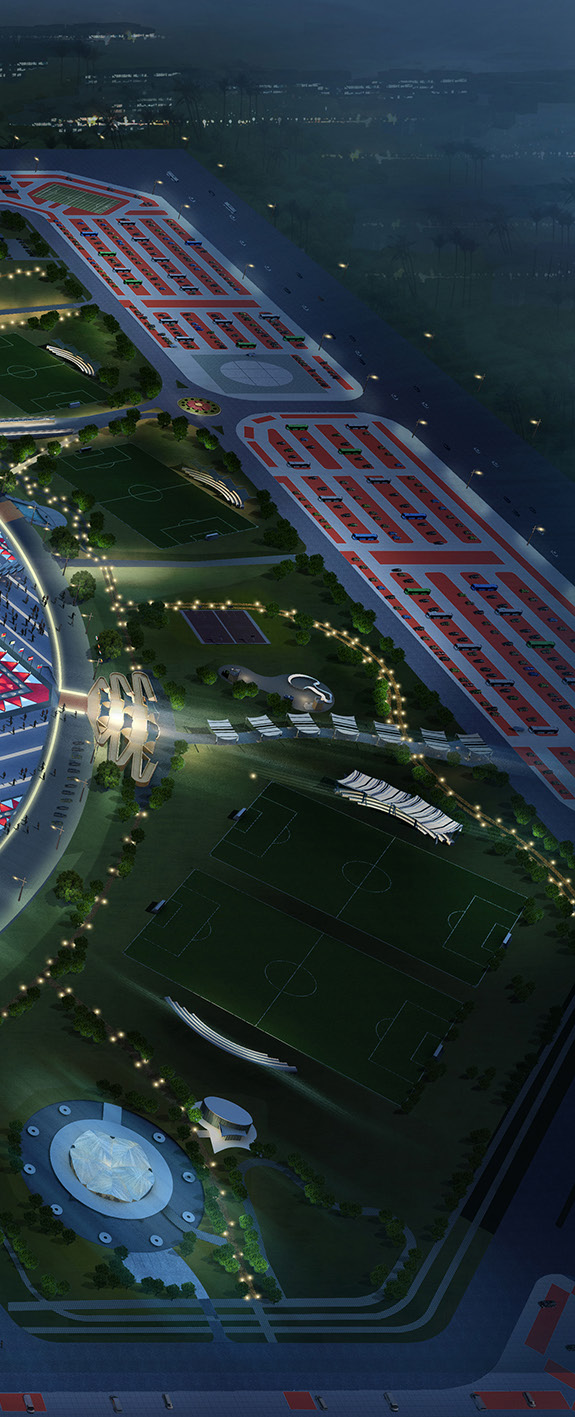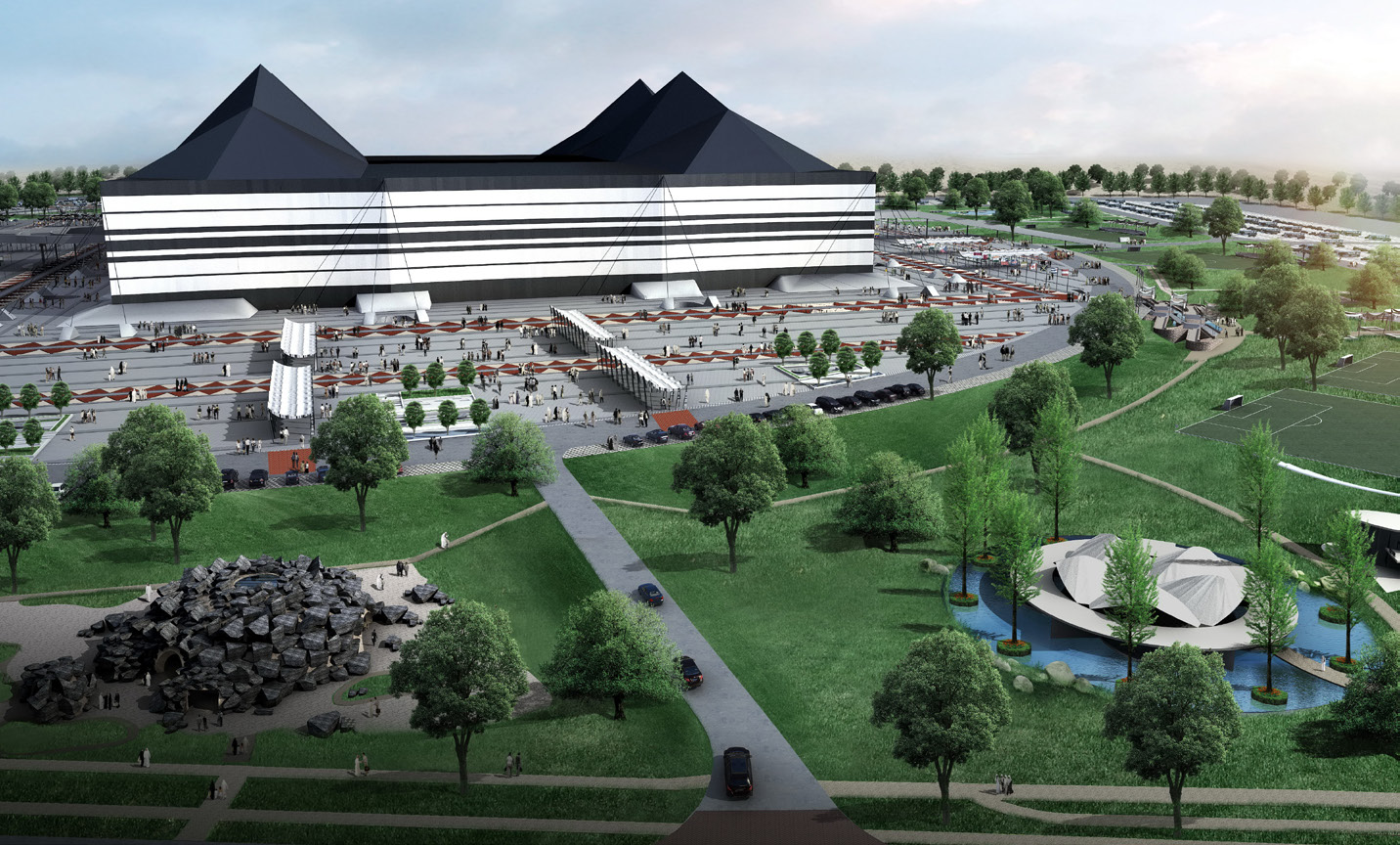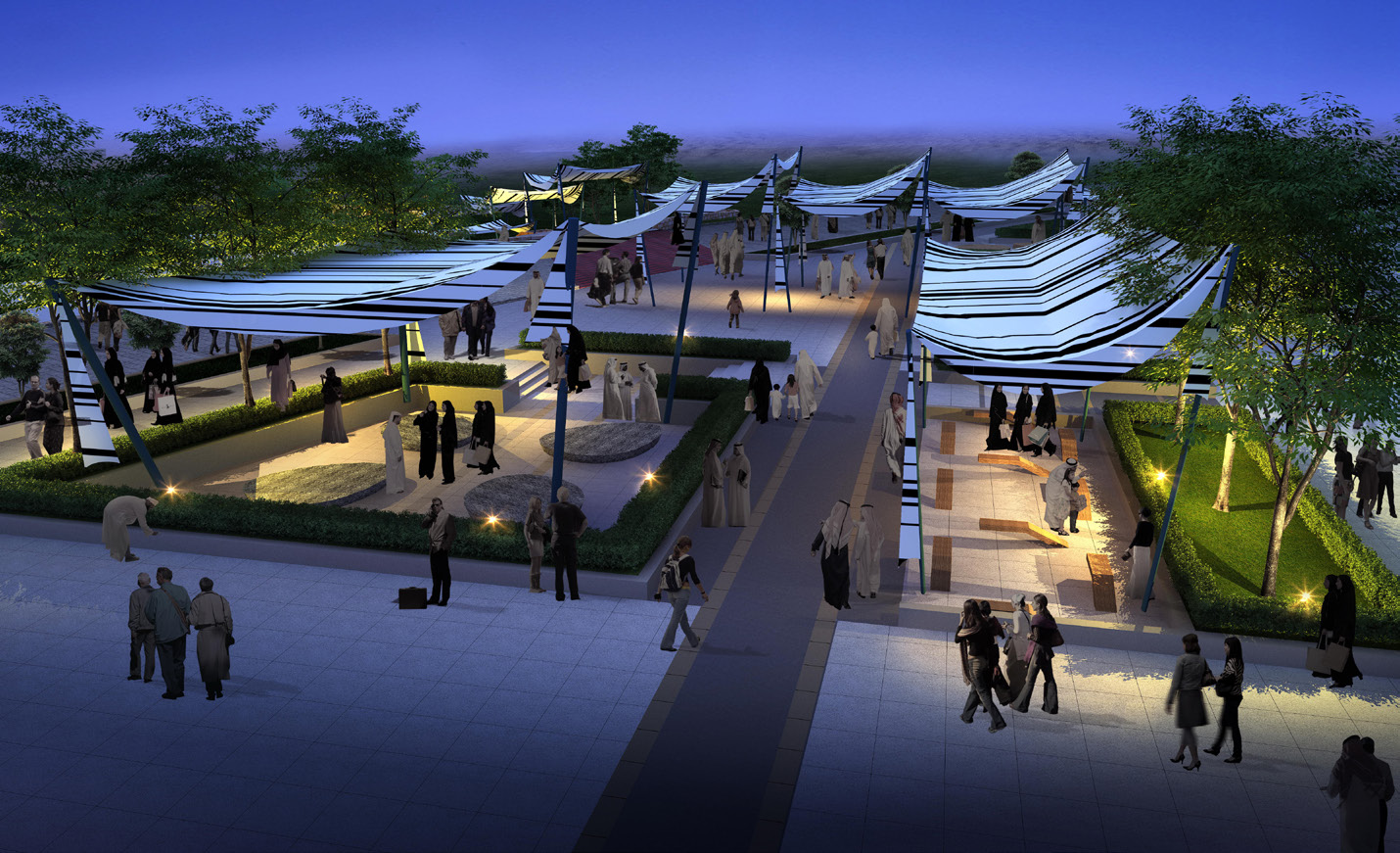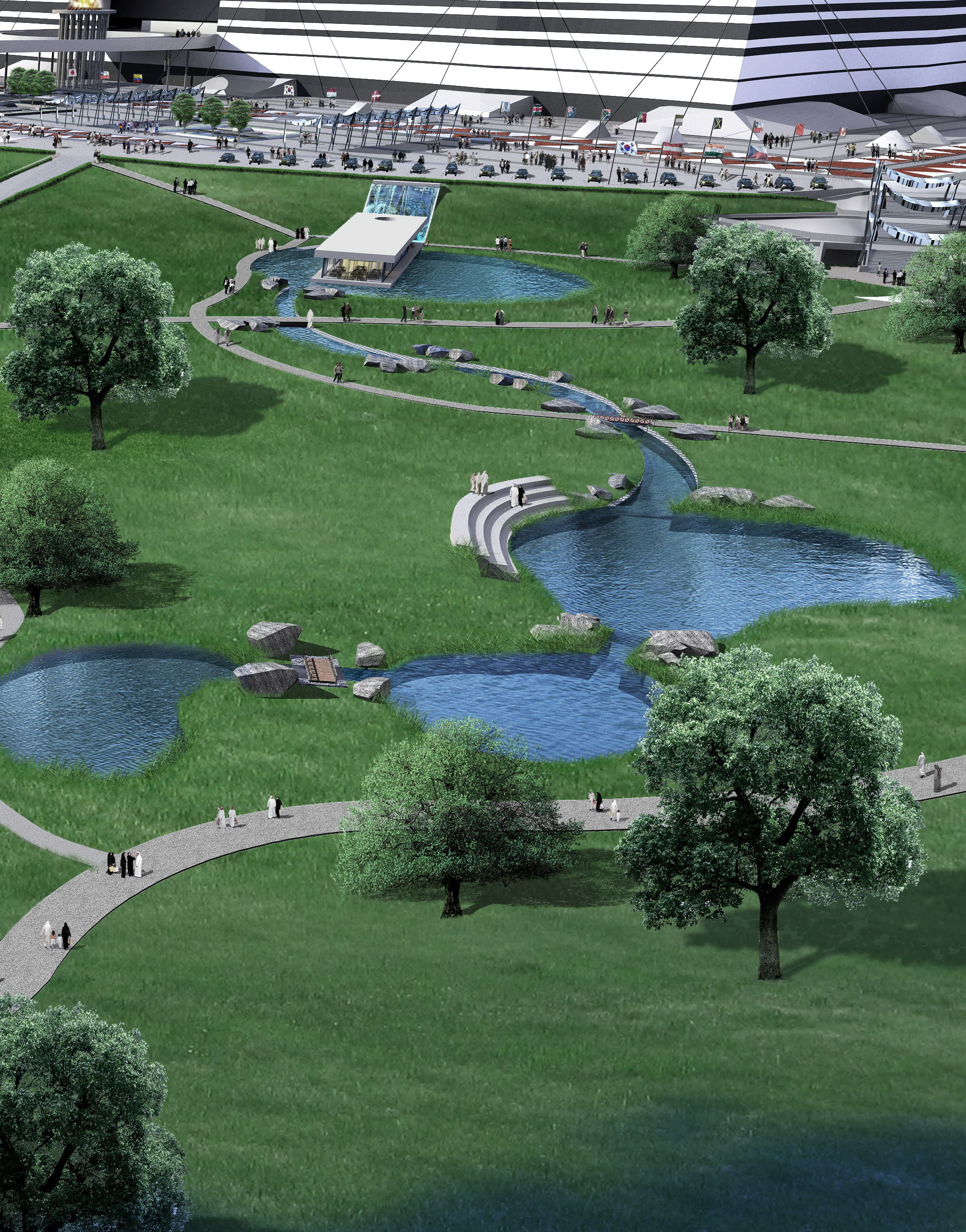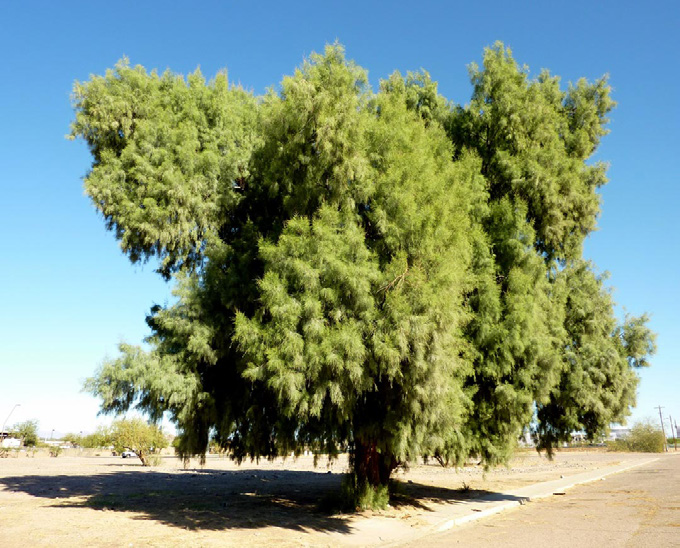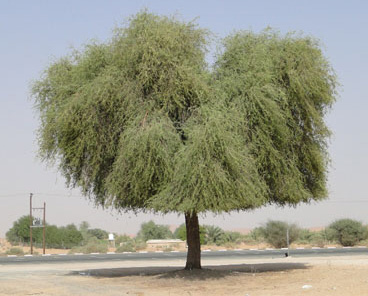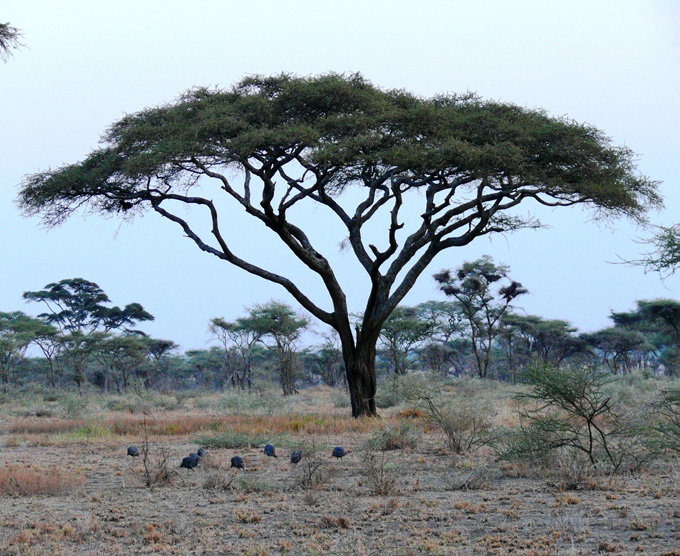Arabian abstractions
Text by Kathleen Kinney. Images by Polis Group Ltd.
Inspired by the desert locale and indigenous culture, the Al Bayt Stadium complex will provide a destination for Doha and the world.
With an estimated 3.5 billion fans worldwide, football is the most popular sport in the world; and FIFA World Cup tournaments, held once every four years, are Olympic Games-level events. For host countries, the creation of new venues and the ancillary fa- cilities and infrastructure needed to support them are billion-dollar projects, nearly a decade in the making. These projects present the opportunity for architects, structural engineers and landscape architects to bring their “A-game” to — quite literally — a world-wide audience.
Polis Group Ltd of Christchurch has won the job of designing the Al Bayt Stadium in Al Khor, about an hour north of Doha. Al Bayt Stadium will serve as one of eight venues for the FIFA World Cup 2022. The project design encompasses landscape, architecture, lighting, irrigation and engineering on a scale and challenge unknown in New Zealand.
Polis is a long-standing collaboration between Chris Glasson Landscape Architects and Thom Craig Architect Ltd. Glasson says the Al Bayt design is inspired by an abstraction of the Arabian Desert. The stadium is situated on a high plateau, eight metres above the surrounding parkland. “The stadium is like the tent,” Glasson explains. “It’s the centrepiece and it offers shelter.”
Wadis or water channels run off the plateau and meander through the parkland to form waterfalls and visual and structural oases, which will support plant life and act as nodes for visitor activity.
Paths through the landscape will read as dry wadis, and will follow a similarly meandering journey through the folds of the landscape, which represent the dunes of the sandy desert.
An area of more than than two million square metres around the stadium will incorporate restaurants, cafés, activity zones and information kiosks.
“There will be a number of tracks for running; some skate-boarding parks, basketball courts... we’re creating a multi-use facility for Doha,” Glasson says.
These facilities will enhance the focus of the space, and allow for events to be hosted there long beyond FIFA 2022. Doha has become a popular destination within the Arab world and serves as host for the Arabian Games, as well as numerous international sports and equestrian events each year.
“As we say in New Zealand, Doha punches above its weight,” Glasson continues. “The growing local population and the proximity to Europe, Africa and Asia – plus the fact that the sea is close by – makes Doha ideally suited for hosting these sort of events.
A coastal environment brings landscape design challenges, though. Notably, the high saline content of the native soil needed to be ameliorated. Along with a freshwater irrigation system, a layer of topsoil and mulch was laid above the sandy base soil. “Of course, we’re also using heat-resistant, drought-tolerant native and exotic plants,” says Glasson. “Most of the natural vegetation is typical to the desert – rather scrubby and not especially remarkable. However, there are certain species of native trees that will do well in this setting, so we’re bringing those in.”
The tree planting will assist pedestrian legibility and wayfinding through the parkland. The two main trees are Ficus nitida (Indian Laurel Fig) and the native Prosopis cineraria (Jandi). Other native specimens will include Acacia tortilis (Samar), and Tamarix aphylla (Athel Tree).
Exotic species include Eucalyptus camaldulensis (River Red Gum). Colour will be added to the landscape through the flowering Lagerstroemia flos reginae (Giant Crape Myrtle), Cassia surattensis (Golden Senna) and Delonix regia (Royal Poinciana).
“The planting style here is a bit different to ours,” Glasson says. “In a desert environment there tend to be more singular trees, rather than groups. People are quite used to the idea of vast areas of space; trees aren’t a big part of their psyche.”
Glasson looked to other cultural touchstones as well. Paving is in- spired by the patterns of Al Sadu — the Bedouin tribal weaving art-form. The Al Sadu motifs reinforce the local aspect, and complement the tent-like stadium. Similarly, the ancillary buildings respond to the local climate and culture through a simple, natural palette of stone and timber.
“I enjoyed finding ways to weave the indigenous culture into various aspects of the landscape,” Glasson says. “The whole context of the design is about linking back to the collective abstract concept of ‘Arabia’, and how that can resonate with the people from around the region and the world who will be coming here.”
